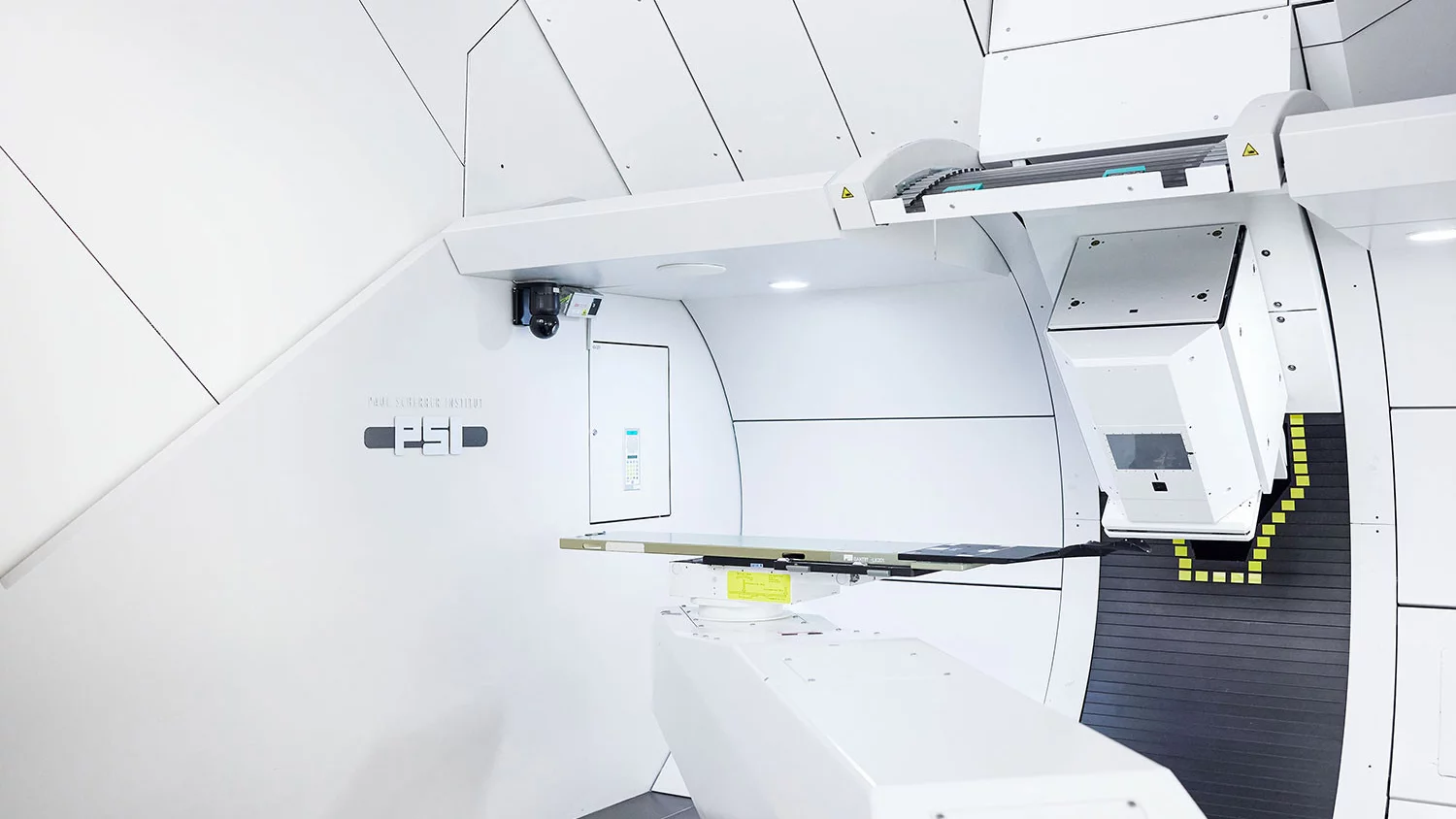The Gantry 2 is a proprietary development of the PSI. It can also be used to treat tumours that move during breathing. This is possible through the so-called "gating" procedure.
It uses two fast magnets with speeds of 1 to 2 cm / msec in the left-to-right and head-to-feet axes respectively to scan through the tumour. In the third dimension, the depth of penetration of the protons, the design of the beamline and gantry allows a change from one tumour layer to the next in about 100 msec (5 mm difference in proton range). Therefore a “volumetric repainting” is possible, this means that during the same treatment the same volume is scanned through several times. This is an important to generate dose distributions that are less sensitive to organ motion.
There is a parallel scanning system. The components in the nozzle are designed to have as little material as possible in the beam path. This maintains a small spot size at all energies (for 100-230 MeV, the width is <3-4 mm). The nozzle can be extended to reduce the air gap between the beam line exit window and the patient. The installation of collimators and compensators is also possible, if required.
A further notable development is the in-room imaging available: an in-room sliding CT is used for treatment planning and the daily verification of the patient position and includes the possibility to perform time-resolved imaging, "4D imaging". In addition, there is another x-ray system mounted on the gantry itself, which takes images in the direction of the proton beam ("beams eye view"). This provides increased precision and quality assurance, in particular in the treatment of moving tumours.

